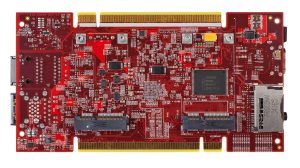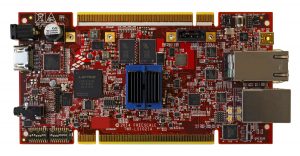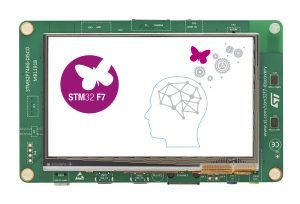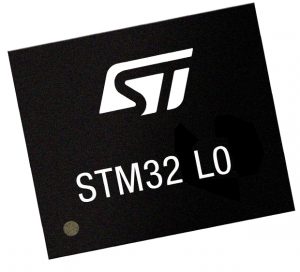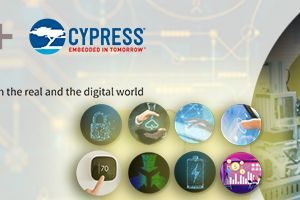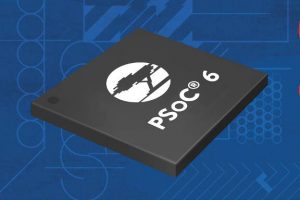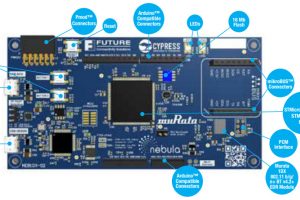Nevertheless, we recently asked managers and VPs from a selection of microcontroller vendors to do just that – offering the “filter” of selecting device families that are key to the connected-embedded-system, or IoT, market, as a justification for making the tough choice. Here are some of the responses:
At Cypress Semiconductor, Jack Ogawa, Senior Director of Marketing, Microcontroller Business Unit doesn’t hesitate, right away citing the latest generation of the company’s established PSoC line, PSoC6. These parts carry both programmable processor cores alongside programmable logic and analogue functions, to maximise the embedded system on a chip. Jack says, “Our latest MCU family is PSoC 6, built on an architecture that is optimized for the Internet of Things (IoT). Our homes, cities, and vital services are becoming smarter, requiring connectivity, increased processing, and data security while operating on batteries. PSoC 6 MCUs meet these needs by offering an ultra-low power, dual-core architecture with hardware-based security.” Their uniqueness, he continues, matches the fact that, “almost all embedded systems are mixed signal; they have both digital and analog components. PSoC MCUs have a long history of being an industry leader in mixed-signal solutions, offering configurable, easy-to-use digital and analog peripherals and a microcontroller in a single device. A particular highlight is our CapSense technology, which is widely regarded as the most robust and best performing capacitive sensing solution.”
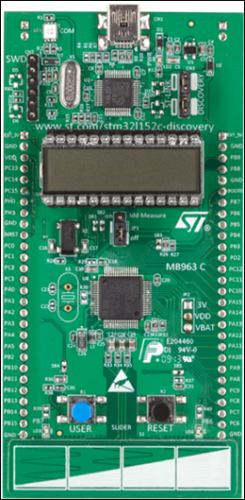 Meanwhile at Renesas, Director of Broad-based Solutions Andy Harding could not hold back from the “proud father” answer! – he says, “Frankly they are all important, for different reasons. We strive to give customers a choice, [with] low power, high performance, integration, processors, and platforms… [founded on] process technology which enables outstanding performance and high integration [and] especially our zero-wait-state flash which has incredible history of reliability & data retention. But it goes beyond the silicon… When architecting our next generation MCU strategy, [we] knew the market would be looking for an ARM core solution but that putting an ARM core inside would make us just another “me too” vendor in an already crowded market. What we found was that we needed to think beyond the silicon device, to complete platforms which would differentiate by shortening design cycles, simplifying design starts and improving total cost of ownership.”
Meanwhile at Renesas, Director of Broad-based Solutions Andy Harding could not hold back from the “proud father” answer! – he says, “Frankly they are all important, for different reasons. We strive to give customers a choice, [with] low power, high performance, integration, processors, and platforms… [founded on] process technology which enables outstanding performance and high integration [and] especially our zero-wait-state flash which has incredible history of reliability & data retention. But it goes beyond the silicon… When architecting our next generation MCU strategy, [we] knew the market would be looking for an ARM core solution but that putting an ARM core inside would make us just another “me too” vendor in an already crowded market. What we found was that we needed to think beyond the silicon device, to complete platforms which would differentiate by shortening design cycles, simplifying design starts and improving total cost of ownership.”
Harding adds, “…most of the differentiation is in the peripherals … we can integrate more memory than most customers need and run it at full speed with no wait states. And our 32-bit MCUs are operating at clock frequencies of 240MHz, with highly efficient instructions.”
Declaring a specific focus on the wireless MCU segment of the market, for Silicon Labs, Oivind Loe (Senior Manager of Strategic Marketing) and Tom Pannell (Senior Director of Marketing) nominate that technology hot-spot as the one, “where we can make biggest impact and can meet customer needs. We offer software (wireless stack) as well as hardware. In fact, we have gone from a chip-focussed company to being vertically orientated providing ICs, software and tools. This allows us to expose more value in the ICs.”
“We think that outsourcing [a] software stack to 3rd party is a recipe for disaster. We don’t like the lack of clarity if there is a bug/problem as it’s usually not possible to dissect the difference between hardware and software. The value is truly found in the interconnection of software and hardware.”
“Tools are also very important: the world isn’t perfect. If a customer wants to deploy 200 mesh nodes, they need to have tools that show them how mesh is working/forming. They need tools that give them insight at packet level. Our energy profiler is another key product. This tool can show what bit of code caused energy spike.” As a further differentiating feature, the Silicon Labs team adds, “…robust operation; some of our parts have to operate reliably at temperatures of up to 125C.”
“Overall, if you don’t care about low power, things are simple. Low power makes everything much more complex.”
For NXP, SVP and General Manager Microcontrollers Geoff Lees has no hesitation in nominating, “The i.MX and Layerscape processors. Both are ARM-based and are complementary. Layerscape is designed for high-end data processing and communications. The i.MX covers a broad market, consumer, automotive, etc. At the lower level we have the Kinetis, which is also ARM-based. It’s more vertical, providing connectivity for applications such as IoT. 15 years ago, it was the first ARM 32 flash microcontroller and now there is a massive variety.”
Lees claims a link to the inception of the technologies now underlying IoT; “We launched the first ARM 32-bit flash micros. The first one was associated with internet connectivity – it was designed to server the new wired connectivity by providing a 56K modem….[and now have strength in] the higher performance end of spectrum… applications such as energy conversion, motor control and wireless connectivity.”
“In the last five years, we have focussed a lot on software. Today, it’s not about providing broad enablement, such as Android, it’s important to provide product application layer solutions. Today many of the design challenges are in software, and this is reflected by the fact that half of our engineering team are software engineers.”
Laurent Vera, EMEA (Europe, Middle East, Africa) Marketing Director for STMicroelectronics chooses to highlight, “The STM32 family of 32-bit Flash microcontrollers, based on the Arm Cortex-M processor core. With 11 series of devices, it runs the full gamut of very high performance, real-time capabilities, digital signal processing, and low power, low voltage operation, while maintaining full integration and ease of development. The large range of STM32 devices is accompanied by a vast ecosystem of tools and software.”
“Ten years ago, when we introduced our first STM32 powered by an Arm Cortex-M3 core, we understood that the value of an MCU wasn’t in the core itself but in everything around it. Picking a partner that could help us establish a standard for microcontrollers was critical and this is what we did with our partnership with Arm. The STM32 is more than a core. It is composed of ST’s unique IP — analog or digital — to serve many different markets.”
“Every design project has a different requirement for balancing cost, integration, performance, and power and we help our customers optimise their projects for their particular goals with more than 750 STM32 part numbers across 11 different series, from the ultra-low power devices at or near the top of the EEMBC low-power benchmarks to the ultra-high performance MCUs at or near the top of the EEMBC performance benchmarks.”
Renesas’ Andy Harding probably speaks for many when he concludes, “There is a lot of hype around IoT. We need to ask what we really mean. [Take] home appliances; now some of those are now being connected to the internet. Shall we then call this an IoT business? If we take that approach, then nearly every market is an IoT market. I prefer to think about IoT in the context of new business models, enabled by the internet, creating new business opportunities.”
Content: Farnell, An Avnet Company
 Electronics Weekly Electronics Design & Components Tech News
Electronics Weekly Electronics Design & Components Tech News
